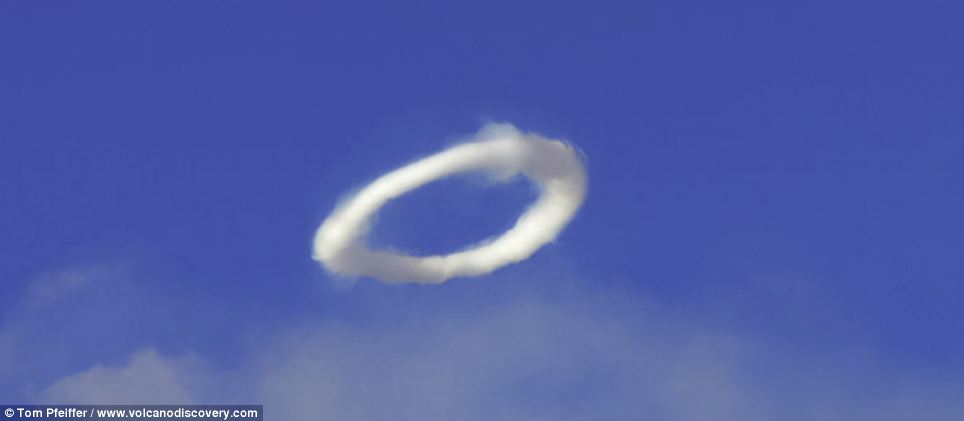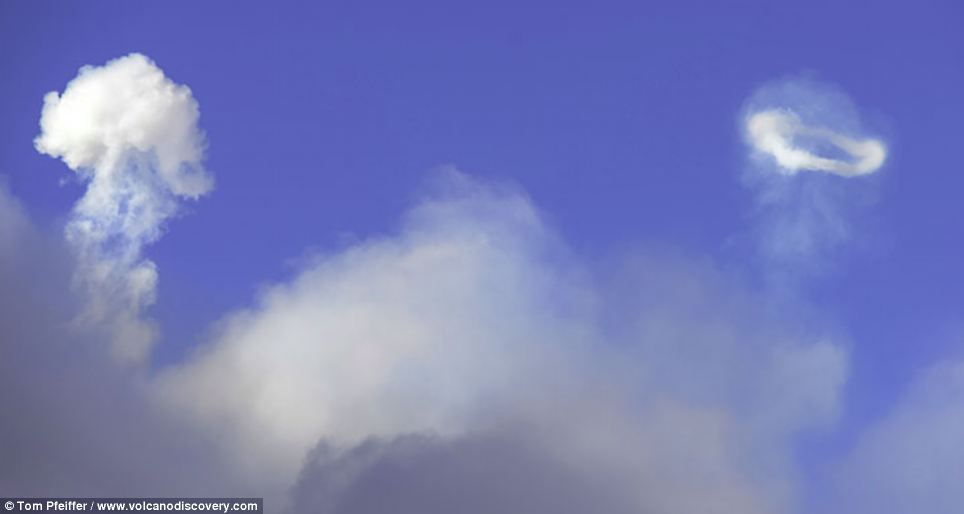- The volcano in Sicily erupted violently on November 11 and has created hundreds of smoke rings that travelled east
- Volcanologist Dr Tom Pfeiffer, who photographed the phenomenon, believes they were produced by a circular vent
- It is not the first time Etna has managed to produce the smoky halos
The volcano erupted violently on November 11 and since then has produced regular explosions, as well as hundreds of perfect vortex rings.
While theories abound, scientists are not entirely sure why the volcano is able to blow the circular puffs of steam - although some think a circular vent could be the cause.

Some of the smoke rings measure hundreds of feet in diameter, according to Volcano Discovery.
German volcanologist Dr Tom Pfeiffer, who founded the volcano watching website and runs tours of active volcanoes, said dozens of smoke rings were blown eastwards by a strong wind.
He believes the reason for the unusual smoke-like formations is because the violent eruption had changed the structure of a vent - perhaps into a particularly circular shape that allowed the volcano to make the steam rings, which he said are a 'rare phenomenon'.
Writing on the website, he said: 'Being Etna, she exaggerates: Not only one ring every now and then, but she made dozens if not hundreds during a few hours, often in a row.'


It is not the first time that Etna has managed to produce the circular smoke rings and photographs have been taken of them since the 1970s and notably in the year 2000.
Mount Etna is the tallest and most active volcano in Europe and is situated on the geological boundary where the European and African plates collide.
In 2,000 when the volcano produced another series of impressive rings, Two volcanologists, Drs Jurg Alean and Maro Fulle, told the BBC: 'They [the rings] could be formed by rapid gas pulses emitted by narrow vents into the atmosphere.
'The physics seems somewhat complicated and we are trying to establish if there are sound scientific theories about them.'
The pair run a monitoring station and keep a photographic record of the volcano's activity.
Other experts have theories about why the rings of steam are produced.
Writing on Fiboni blog, Sana Lane said steam rings above volcanoes typically measure between 100m and 200m across.
She said 'vortex rings' are formed when air mixes with steam or smoke, having been forced out of a small circular opening.
Because there is a bottleneck at the opening, the air in the centre if forced out faster, which creates a circular motion to form a vortex.
The shape of the ring is maintained because of the rotational motion of the air so the rings need the right shaped opening and velocity to form.
Mount Etna is not the only volcano to have created the curious rings and Stromboli in Italy, Hekla in Iceland and Mount Aso in Japan are also said to have produced steam rings.



Reader Comments
to our Newsletter